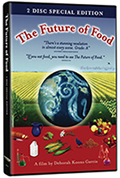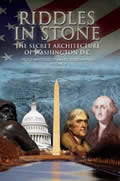THE DESTRUCTION OF AMERICA: CALIFORNIA'S GROWING THIRD WORLD POPULATION
By Frosty
Wooldridge
May 28, 2012
NewsWithViews.com
California’s growing third world population
If you visit northern California, you might think everything works well. But as soon as you reach San Francisco and travel south, you understand nothing can end up ‘well’ in a state morphing into third world slums.
What defines the ‘third world’? In a word: illiteracy! Once entrenched, you cannot and will not solve it, change it or rearrange it. It grows like barnacles on a whale’s belly, like slums in a city, like the AIDS virus.
On the Mexican border, the poorest of the poor cross the Rio Grande and set up Colonias known as ‘new neighborhoods’ in California, Arizona, New Mexico and Texas. The New York Times reported on them, “The Third World forms on America’s southern border.” They found in 1985 an estimated 500,000 Mexicans living in cardboard shacks, trailers, no water, no electricity, no roads, no sewage. In 1995, the numbers hit 1 million. The NYT estimated at the current growth, colonias would reach 20 million within 30 years.
It means a gargantuan predicament for our country as to health, welfare, education, medical care and sustainability.
Finally, a no-nonsense historian, none other than California’s Victor Davis Hanson, wrote a sobering story for all of America as to relentless immigration pouring over our borders, both legal and illegal: “Two California’s—Abandoned farms, Third World living conditions, pervasive public assistance -- welcome to the once-thriving Central Valley.” Full text in www.capitoliticalnews.com
Victor Davis Hanson touched upon it in his travels:
“Many of the rented-out rural shacks and stationary Winnebagos are on former small farms — the vineyards overgrown with weeds, or torn out with the ground lying fallow. I pass on the cultural consequences to communities from the loss of thousands of small farming families. I don’t think I can remember another time when so many acres in the eastern part of the valley have gone out of production, even though farm prices have recently rebounded. Apparently it is simply not worth the gamble of investing $7,000 to $10,000 an acre in a new orchard or vineyard. What an anomaly — with suddenly soaring farm prices, still we have thousands of acres in the world’s richest agricultural belt, with available water on the east side of the valley and plentiful labor, gone idle or in disuse. Is credit frozen? Are there simply no more farmers? Are the schools so bad as to scare away potential agricultural entrepreneurs? Or are we all terrified by the national debt and uncertain future?
“California coastal elites may worry about the oxygen content of water available to a three-inch smelt in the Sacramento–San Joaquin River Delta, but they seem to have no interest in the epidemic dumping of trash, furniture, and often toxic substances throughout California’s rural hinterland. Yesterday, for example, I rode my bike by a stopped van just as the occupants tossed seven plastic bags of raw refuse onto the side of the road. I rode up near their bumper and said in my broken Spanish not to throw garbage onto the public road. But there were three of them, and one of me. So I was lucky to be sworn at only. I note in passing that I would not drive into Mexico and, as a guest, dare to pull over and throw seven bags of trash into the environment of my host.
“In fact, trash piles are commonplace out here — composed of everything from half-empty paint cans and children’s plastic toys to diapers and moldy food. I have never seen a rural sheriff cite a litterer, or witnessed state EPA workers cleaning up these unauthorized wastelands. So I would suggest to Bay Area scientists that the environment is taking a much harder beating down here in central California than it is in the Delta. Perhaps before we cut off more irrigation water to the west side of the valley, we might invest some green dollars into cleaning up the unsightly and sometimes dangerous garbage that now litters the outskirts of our rural communities.
“We hear about the tough small-business regulations that have driven residents out of the state, at the rate of 2,000 to 3,000 a week. But from my unscientific observations these past weeks, it seems rather easy to open a small business in California without any oversight at all, or at least what I might call a “counter business.” I counted eleven mobile hot-kitchen trucks that simply park by the side of the road, spread about some plastic chairs, pull down a tarp canopy, and, presto, become mini-restaurants. There are no “facilities” such as toilets or washrooms. But I do frequently see lard trails on the isolated roads I bike on, where trucks apparently have simply opened their draining tanks and sped on, leaving a slick of cooking fats and oils. Crows and ground squirrels love them; they can be seen from a distance mysteriously occupied in the middle of the road.
“At crossroads, peddlers in a counter-California economy sell almost anything. Here is what I noticed at an intersection on the west side last week: shovels, rakes, hoes, gas pumps, lawnmowers, edgers, blowers, jackets, gloves, and caps. The merchandise was all new. I doubt whether in high-tax California sales taxes or income taxes were paid on any of these stop-and-go transactions.
“In two supermarkets 50 miles apart, I was the only one in line who did not pay with a social-service plastic card (gone are the days when “food stamps” were embarrassing bulky coupons). But I did not see any relationship between the use of the card and poverty as we once knew it: The electrical appurtenances owned by the user and the car into which the groceries were loaded were indistinguishable from those of the upper middle class. [Rampant ID forgeries, theft and fraud abound in California.]
“By that I mean that most consumers drove late-model Camrys, Accords, or Tauruses, had iPhones, Bluetooths, or BlackBerries, and bought everything in the store with public-assistance credit. This seemed a world apart from the trailers I had just ridden by the day before. I don’t editorialize here on the logic or morality of any of this, but I note only that there are vast numbers of people who apparently are not working, are on public food assistance, and enjoy the technological veneer of the middle class. California has a consumer market surely, but often no apparent source of income. Does the $40 million a day supplement to unemployment benefits from Washington explain some of this?
“Do diversity concerns, as in lack of diversity, work both ways? Over a hundred-mile stretch, when I stopped in San Joaquin for a bottled water, or drove through Orange Cove, or got gas in Parlier, or went to a corner market in southwestern Selma, my home town, I was the only non-Hispanic — there were no Asians, no blacks, no other whites. We may speak of the richness of “diversity,” but those who cherish that ideal simply have no idea that there are now countless inland communities that have become near-apartheid societies, where Spanish is the first language, the schools are not at all diverse, and the federal and state governments are either the main employers or at least the chief sources of income — whether through emergency rooms, rural health clinics, public schools, or social-service offices. An observer from Mars might conclude that our elites and masses have given up on the ideal of integration and assimilation, perhaps in the wake of the arrival of 11 to 15 million illegal aliens.
| Subscribe to the NewsWithViews Daily News Alerts! |
“Again, I do not editorialize, but I note these vast transformations over the last 20 years that are the paradoxical wages of unchecked illegal immigration from Mexico, a vast expansion of California’s entitlements and taxes, the flight of the upper middle class out of state, the deliberate effort not to tap natural resources, the downsizing in manufacturing and agriculture, and the departure of whites, blacks, and Asians from many of these small towns to more racially diverse and upscale areas of California.”
Listen to Frosty Wooldridge on Wednesdays as he interviews top national leaders on his radio show "Connecting the Dots" at www.themicroeffect.com at 6:00 PM Mountain Time. Adjust tuning in to your time zone.
� 2012 Frosty Wooldridge - All Rights Reserved
Sign
Up For Free E-Mail Alerts
E-Mails are used strictly for NWVs alerts,
not for sale
Frosty Wooldridge possesses a unique view of the world, cultures and families in that he has bicycled around the globe 100,000 miles, on six continents and six times across the United States in the past 30 years. His published books include: "HANDBOOK FOR TOURING BICYCLISTS"; �STRIKE THREE! TAKE YOUR BASE�; �IMMIGRATION�S UNARMED INVASION: DEADLY CONSEQUENCES�; �MOTORCYCLE ADVENTURE TO ALASKA: INTO THE WIND�A TEEN NOVEL�; �BICYCLING AROUND THE WORLD: TIRE TRACKS FOR YOUR IMAGINATION�; �AN EXTREME ENCOUNTER: ANTARCTICA.� His next book: �TILTING THE STATUE OF LIBERTY INTO A SWAMP.� He lives in Denver, Colorado.
His latest book. �IMMIGRATION�S UNARMED INVASION�DEADLY CONSEQUENCES.�
Website: www.FrostyWooldridge.com
E:Mail: frostyw@juno.com

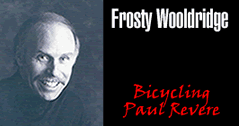
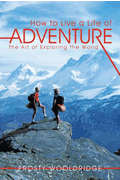
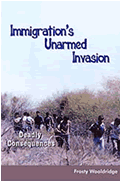


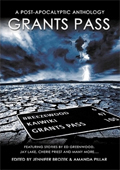
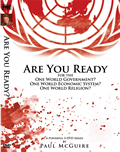



 Share
This Article
Share
This Article



